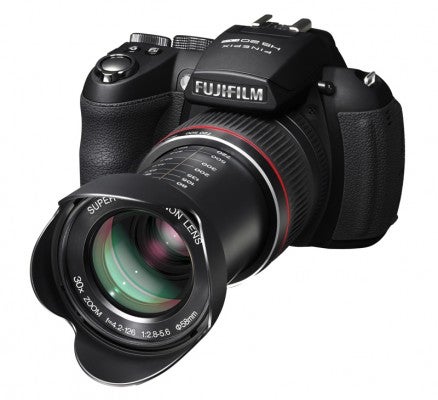The Fuji HS20 brings Fujifilm's EXR processing technology to the superzoom fold. But is this latest 30x optical zoom beast good enough to bring the superzoom market forward? The What Digital Camera Fujifilm FinePix HS20 EXR review takes a look...
Fujifilm FinePix HS20 EXR Review
Performance
Fujifilm FinePix HS20 EXR review – Performance
In use and the FinePix HS20 certainly delivers the goods. Using the zoom is effortless for framing up subjects at any given distance, though without lens-based stabilisation it’s not possible to see the preview steadied for improved framing. Instead sensor-based stabilisation provides that extra stability in the final shot only.
The autofocus system itself is snappy off the mark and accurate though playback will cease before final capture, so high-speed shooting and tracking moving subjects is tricky. There are a variety of options for Centre-point, Multi-point, Area or Tracking focus. Using the Area AF and there are 49 possible areas to choose from that cover almost to the very edges.
Selecting a point using the rear d-pad is simple, but the AF point will only become fixed upon pressing the ‘ok’ button, which seems a little backwards when compared to the aforementioned ‘press and hold’ style of selection. It’s all too easy to open the ‘AF’ menu and not even adjust the AF point position – yet the ‘ok’ button still has to be pressed. Failure to do so locks up the camera, preventing it from shooting which makes that extra button press feel just one too many.
Macro enthusiasts will be pleased by the close-up capabilities of the Macro and Super Macro options that can focus as near as 1cm to a subject at the lens’s widest-angle setting.
As well as JPEG files it’s also possible to capture Raw shots. While certainly a perk, the time taken to store a single Raw file to the card can take between 5-8 seconds and the camera is rendered inoperable during this time. It’s not the ideal option to pick if you’re the burst shooting type, though the ‘top 4′ continuous shooting option will snap away up to four frames at 11.2fps (at 8MP) in either JPEG, Raw or both Raw and JPEG simultaneously.
The fast burst rate is met with useful options in the drive menu such as Dynamic Range Bracketing or Auto Exposure Bracketing. Other options include ‘Best Frame Capture’ (i.e. standard bust mode) that shoots on a half-press of the shutter and then ceases on a full press, or even ‘Film Simulation Bracketing’.
The Film Simulation modes offer Fuji’s traditional film types: Provia (standard), Velvia (vibrant) and Astia (soft) as well as Black & White and Sepia options. Elsewhere in the menus it’s possible to customise Color, Tone, Sharpness and Noise Reduction and even a WB Shift for that extra level of control. Modes such as Pro Focus also offer a point-and-shoot way to shoot a subject with a blurred background.
The new Panorama mode is capable of capturing panoramic images in real time as far around as a full 360∞ rotation, though it’s only rendered as 1080-pixels high which may be too small for all potential applications. Other quirks include an electronic level to assist with aligning straight horizons that can be viewed in both the viewfinder or on the LCD screen.
Then of course the HS20 EXR also has a 1080p movie capture mode that uses the H.264 compression codec and outputs MOV files straight from camera (no computer-based processing required here).
Capture begins via the one-touch movie button, though this does prompt a screen blackout and brief delay before recording commences. During recording it’s possible to utilise full-time autofocus for continual focus adjustment.
However issues with over- and under-focusing (that renders into the final movie) are commonplace depending on the severity of movement, zooming and subject depths. Otherwise a centre-point AF option shoots with a fixed focus point that cannot be adjusted throughout shooting. The movie option’s a nice touch and the ability to use the camera’s lens to its full extent is great, though videographers looking for full control may feel let down by no manual options whatsoever.







